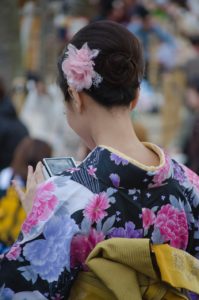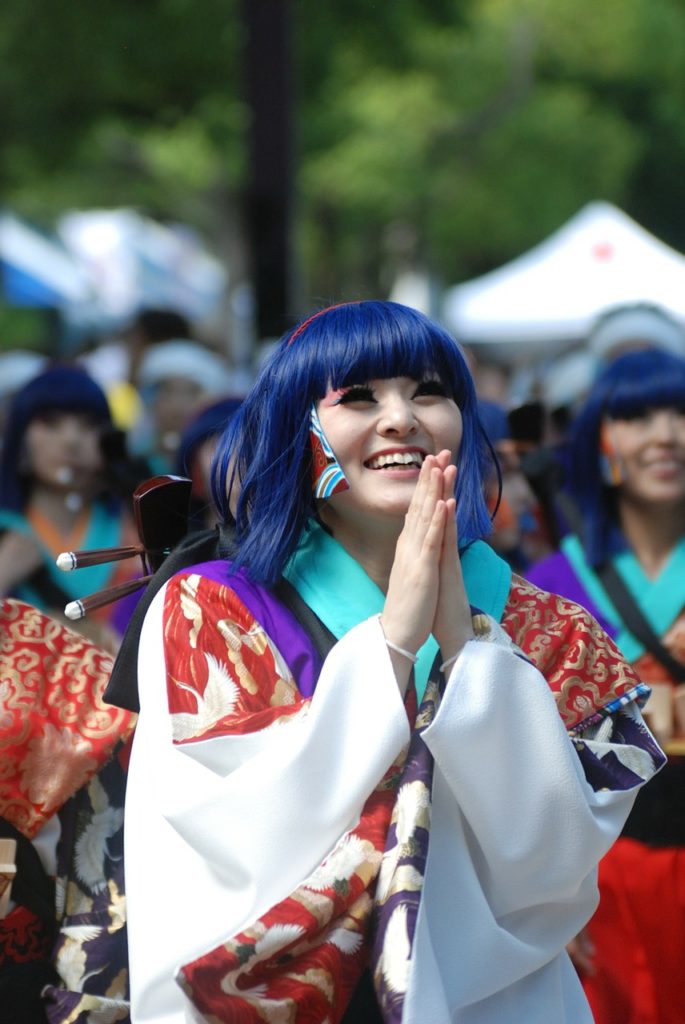5 Reasons You Want A Professional Japanese Translator
The Japanese language is structured differently than English, in both spoken and written form. Some expressions can be articulated more easily and fluently in Japanese while others cannot. This makes Japanese translation a bit more tricky than usual.
Japanese and English are very different languages in many ways. Only an expertly skilled Japanese translator can best express the inherent nuances between both languages and ensure a translated message is meaningful and appropriate.
Before jumping to any quick method of Japanese translation or trying for a less accurate machine translation online, get to know the ins and outs of this intriguing language. Japanese is spoken by more than 125 million people in Japan plus many other places all around the world. It’s in the top 10 most spoken languages in the world, and it’s one of the top languages on the web used today in art, social and business communications.
Here are 5 of the most important reasons it pays to hire a skilled, professional and often native Japanese translator to confidently and correctly handle your important and sensitive business translation work in Japanese:
Japanese Translation Requires Different Grammar Than English

The Japanese language is structured differently than English, in both spoken and written form. Some expressions can be articulated more easily and fluently in Japanese while others cannot. This makes Japanese translation a bit more tricky than usual.
For example, Japanese language doesn’t repeat a sentence subject or at times even mention it at all. Some expressions in English can be said much shorter and differently in Japanese, especially since the subject is often omitted from sentences. Verb tenses are also much more varied. Some Japanese verb tenses don’t even have an English equivalent.
It takes a skilled, knowledgeable Japanese translator to look between the lines of what’s being said in each language, understand the actual intent of the communication meaning, and express it in the best manner for the target translation language.
Japanese Writing Uses Up to 4 Different Alphabets And Styles
The written Japanese language is considered one of the hardest written language systems to learn in the world. The Japanese writing system actually consists of 4 distinct components, or groups of alphabet characters, each with its own specific usage purpose:
- Hiragana – Japanese phonetic lettering system that serves as an alphabet of written characters representing syllables. Meaning “ordinary” or “simple”
kana (kana are syllabic Japanese scripts or characters, part of the Japanese writing system), Hiragana can be considered as the basics of Japanese pronunciation. It’s used for natural Japanese words not covered by kanji and grammar inflections.
Hiragana can be considered as the basics of Japanese pronunciation. It’s used for natural Japanese words not covered by kanji and grammar inflections.
- Katakana – Another Japanese syllabary or alphabet of written characters representing syllables in Japanese. Katakana characters are made up from fragments or pieces of more complex kanji (Chinese adopted characters). Like hiragana, katakana is also a kana (syllabic characters or scripts composing the Japanese writing system). The word katakana literally translates to “fragmented kana” in Japanese. Similar to the use of italics emphasis in English, katakana is used for transcribing foreign language words and phonetically adopted foreign words into Japanese. It’s also used for emphasis, for writing onomatopoeia (words that phonetically resemble the sound they describe), for scientific and technical terms, and for names of animals, plants, minerals and proper names of Japanese companies.
- Kanji – Adopted logographic written symbols from Chinese characters that are used in the Japanese writing system. Literally meaning “Han characters” in direct reference to the Han Chinese ethnic group. Kanji are often combined with or used alongside the other easier Japanese syllabic character scripts Hiragana and Katakana. Kanji is much trickier to learn, use and understand. It’s further composed of 2 types of readings, called On’yomi and Kun’yomi. Depending how the kanji are used together or with other hiragana determines which type of reading is applied. On’yomi are readings derived from the Chinese pronunciations, and kunyomi are the original indigenous Japanese readings.
- Romaji – Literally the romanization of Japanese, or the adoption of Latin script letters to write in Japanese. This method of writing translates to “roman letters,” and can be used in helpful situations where a foreign audience needs to read educational textbooks or names on street signs but cannot understand kanji or kana. Romaji is widely used to help non-Japanese speakers better understand some words in the Japanese language by using the root context of the Latin script alphabet letters. While most Japanese native speakers are more comfortable reading kanji and kana, almost all are also able to read and write using romaji latin characters to phonetically describe Japanese words and expressions when needed.
Basically, Japanese is written in a combination of logographic characters (or kanji) borrowed from the Chinese language and syllabic scripts that are also ultimately descended from Chinese characters (kana). Our skilled Japanese translators know when to leave certain words in English for better translation quality and understanding, such as company names like Google, Apple or Microsoft, or product names like Chromebook and iPhone.
This is another reason why not to leave a Japanese translation to chance, especially for business or professional purposes. A native and professional Japanese translator inherently knows just when it’s best to use either kanji, katakana, or a combination of both, depending on the type and nature of the project or intended message.
Japanese Language Is Strongly Tied To Its Cultural Meaning

Japanese is known as one of the harder languages to master by non-native foreigners. Part of the Japonic language family, it uses a very different structure with Japanese expression deeply rooted in its cultural customs and social norms. Because of this, the translation process between Japanese and English can take up to five different steps, making the process more complex than other translations.
To contrast, language translations between Latin root, Germanic root and Romance languages have more natural commonalities, sharing closer grammar structures and cultural profiles. English for example shares Latin Romance language roots as well as Germanic language roots. However, Japanese is not really closely related to any other modern or major language. Japan in contrast also has its own unique cultural lens shaping its language.
Implied and literal meanings can take very different turns from each other in Japanese. Japanese is a contextual language, where meanings can often be ambiguous or nonexistent. A word or an expression’s literal meaning in Japanese can often be different than its actual implied meaning. A skilled native Japanese translator will have to “read between the lines” to specify additional details on meaning when translating from Japanese to English. One example of this ambiguity is that Japanese expressions often will not specify if subjects and objects are male or female, or even describe if they’re in singular or plural. In English of course, these attributes are much more clear and almost always specified.
Japanese Speakers Apply 3 Different Levels Of Politeness Tones
Politeness greatly influences the Japanese language and way of speaking even in modern times today. Japan has a strong culture of politeness and service. The Japanese language also has much more complex title honorifics beyond the English language’s simple “Sir” “Madam” or “Miss” titles.

- Inside vs. outside communication style – For starters, the Japanese culture has 2 main politeness consideration levels named “Uchi” or “inside,” and “Soto” or “outside.” These can make Japanese speech totally different. Uchi and Soto are a basis of Japanese social custom and sociolinguistics, denoting the difference between in-groups (Uchi) and out-groups (Soto). Each group functions in relation to all of a person’s connected and overlapping social circles. In turn, each Japanese speaker uses a different level of Japanese language depending on which social circle group they are communicating in.Higher honorifics are used in an out-group while a person’s in-group stays humbled. Skilled Japanese speakers achieve this by conjugating verbs based on specific tense and politeness level. The great complexity of the uchi-soto system is that each person’s groups are not static, they often overlap, evolve and change over time depending on each situation. The concept of uchi-soto also extends to social situations, helping to determine each hierarchy of social standing within each group, whether that be corporate at work or family at home.
- Hierarchical communication style – Within this inside / outside communication structure, Japanese also has 3 – 4 different tones of politeness, ranging from normal, polite, to honorific. These are highly dependent on the relationship between the communicating parties or speakers. Imagine different ways of expression based on whether it’s a boss or a higher class person, a stranger or acquaintance, a close friend, or a subordinate employee. Each of these groups receives a very different version of the same Japanese expression. Without that added finesse of distinction, unaware foreign travellers often risk sounding rude to native Japanese speakers when addressing them in Japanese. The Japanese honorific tone tends to be quite hard for foreign speakers and writers to properly master.
- Gender communication style – There’s an added layer of consideration whether the communicator is male or female. In Japan, the cultural norm is for men and women to express themselves in particularly different ways. Mixing these up in communication is usually considered rude or inappropriate. Men and women basically have different words and expressions as acceptable ways of communicating to show politeness, consideration and respect. This “gendered language” cultural tradition dates back to 19th Century Japanese upper classes who instilled it.
Japanese Language Varies Greatly By Region And Dialect

Japanese is spoken almost completely inside Japan’s five main archipelago islands of Hokkaido, Honshu, Shikoku, Kyushu and Okinawa. Within the Japanese language however there are also a variety of differing sub-dialects which are hugely different and unintelligible between them.
The two main dialects in Japan are the Tokyo dialect and the Kyoto-Osaka dialect. Each differs from the other in terms of tone, rhythm, pronunciation and vocabulary. A third native dialect called Ryukyuan from the Okinawan archipelago is considered a dialect by native Japanese speakers but treated as its own language by professional translators and linguists.
The historical reach of the Japanese language has also spanned through other nearby nations like Korea, Taiwan, the Philippines and in some parts of China.
Today, Japanese is a huge emigrant language spoken in other parts throughout the world. Large Japanese cultural emigre communities live in Brazil, the United States and Hawaii, the Philippines, Canada and China.
Professional Japanese Native Speakers And Translators From Atenao

Thanks to Japan’s industrial might all over the world plus in the West and in the United States, translation between Japanese and English is very common. Conveying the exact business message, tone and meaning are of paramount importance in two cultures as different and keen to interact as the United States and Japan.
Japanese engineering firms, automotive suppliers, advanced technology parts and precision tech industries are just some examples of industry abroad. Japanese companies with strong American presence closely interact with colleagues and clients between both countries.
Our skilled array of native and professional translators at Atenao can provide you the highest confidence with accurate Japanese translation meaning. Our English to Japanese or Japanese to English translation is billed by the word and supported our with translation memory glossaries. This way we provide the highest quality, consistent translation for your valued business materials in every single project.
Contact us today or request a quote for your next translation project from Japanese or into Japanese. Get your professional Japanese translation done professionally with Atenao for the best value and fastest turnaround.







